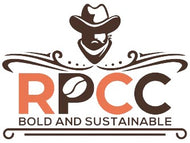How is Decaf Coffee Made?

Decaffeinated coffee may sound like an oxymoron, but really it can be the perfect drink. When you're looking for that coffee taste without any of the side effects, it provides the perfect solution.
But what magic goes into making coffee decaffeinated? Are there other things you lose in making the switch? Let's find out.

The History of Decaffeinated Coffee
In 1819, Johann Wolfgang von Goethe noticed an experiment from the chemist Fiedlieb Ferdinand Runge. In the experiment, the chemist showed that nightshade could be used to dilate a cat’s pupils. For some reason, this encouraged Von Goethe to ask Runge why coffee beans kept him awake at night. This was the first official study into caffeine.
In 1905, German merchant Ludwig Roselius's coffee shipment had an accident, dunking the coffee beans in the water. The water washed out the caffeine and led to the investigation that has since created decaffeinated coffee. Roselius proceeded to use benzene to wash out the caffeine, selling the product as “Sanka”.
Since then, the decaffeination process has changed dramatically. For one, it no longer uses a known carcinogen. Processes used today are also a lot better at helping the beans maintain their flavor.





